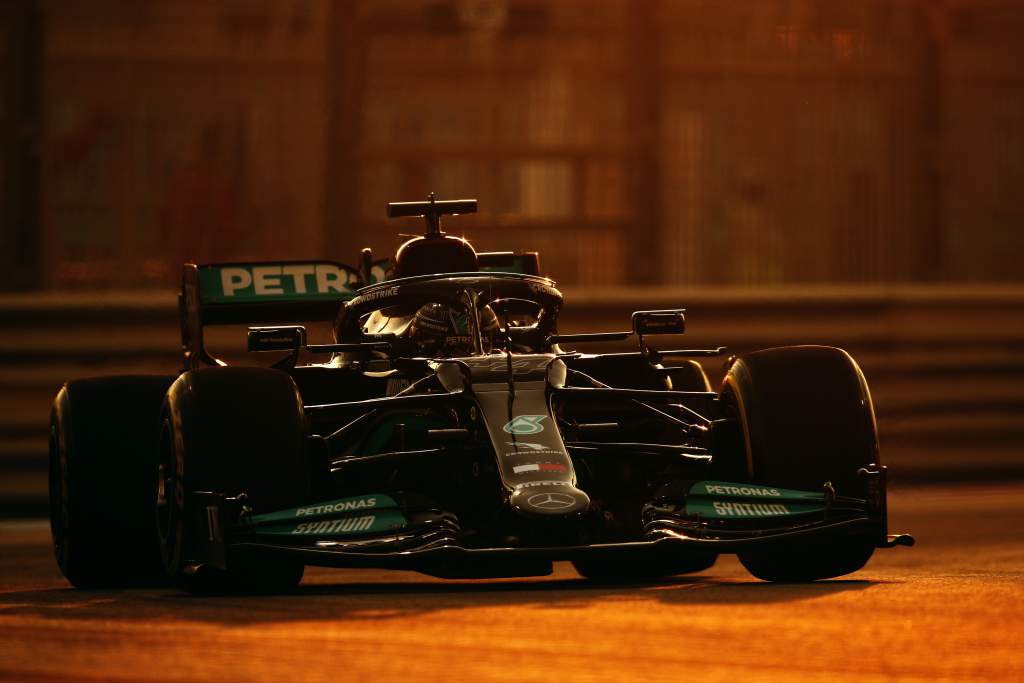Up Next

Mercedes was pushed harder than at any other time during Formula 1’s V6 turbo hybrid era in 2021, hanging onto the constructors’ championship for a record-extending eighth-consecutive season but with Lewis Hamilton missing out on the drivers’ title.
It says a lot about this team’s prodigious success that this year could be perceived as in any way a failure.
With the cars carrying over from 2020, the W12 was a reworked version of last year’s all-conquering W11. But crucial to the understanding of its more challenging season was the set of four aerodynamic rule changes added to the ’21 regulations in two phases last year. Combined with Red Bull’s improvement, this added up to a much tougher campaign.
It also explained the fact that Mercedes never introduced the modified nose it had allocated its two development tokens to. That decision was made before the final rule tweaks were added to the 2021 regulations, but it soon became clear that the balance implications of the rule changes meant there were other priorities.
The triangular cut to the rear part half of the floor that started 1800mm behind the rear axle, the elimination of the floor slots, the reduction in height of the diffuser strakes and the cutback of the winglets on the lower part of the rear ducts did hurt the low-rake cars more.
That led to a car that wasn’t as competitive as hoped in pre-season testing, up against a Red Bull that was able to generate more peak downforce. The higher downforce ceiling potential of the higher-rake concept was always an advantage, but these changes made the contrast bigger.
“When you have a car which is dominant, like we’d had previously, the balance you’ve got doesn’t really matter,” says technical director Mike Elliott. “I don’t think the main issue at the beginning of the season was balance, rather that we’d just lost a lot of aero performance overall.
“Whether that hit us harder than others, we can’t judge. But by the time we’d done our work over the winter and turned up at the track, the advantage we’d had, had disappeared.”
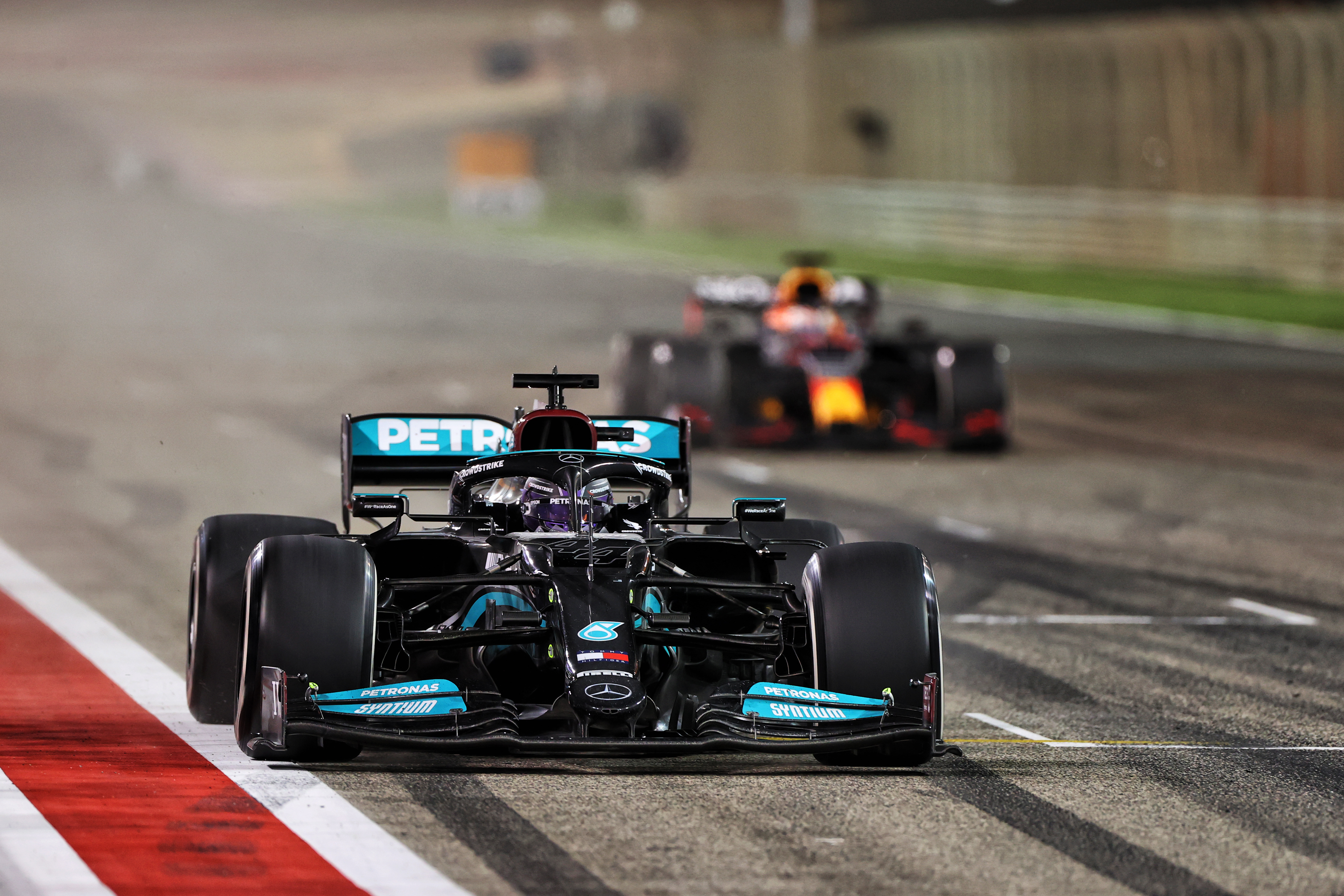
But team principal Toto Wolff and Hamilton were happy to point the finger at the rule changes. The rationale behind them was to prevent downforce levels rising and overloading the Pirelli tyres, which were carried over for a third consecutive season.
While not as spurious a reason as some contended, the fact it resulted in slightly slower cars in 2021 means the suggestions the changes were partly motivated by a desire to cut back Mercedes can’t be dismissed entirely.
But it would also be unfair to disregard the fact that Red Bull and Honda also made a big step this year and would likely have posed a bigger threat even without these changes.
Not that the Mercedes wasn’t a strong car from the start. Hamilton won three of the first four races, although that tally was distorted a little by the fact that the win in the Bahrain season opener was very much against the run of play having grabbed track position with an undercut.
“It wasn’t a crisis,” says Elliott of that phase of the season. “[It was a question of] getting on top of the tyres, working out the optimum set-up for the car and how can we squeeze out more. The whole season has been like that. You just find those bits and pieces bringing small dividends.
“Once we took the hit for the reg changes, we found ourselves on a really steep development curve – which is kind of what you expect when the car’s been really unsettled. Our bigger issue was that development curve flattened out rather quickly.”
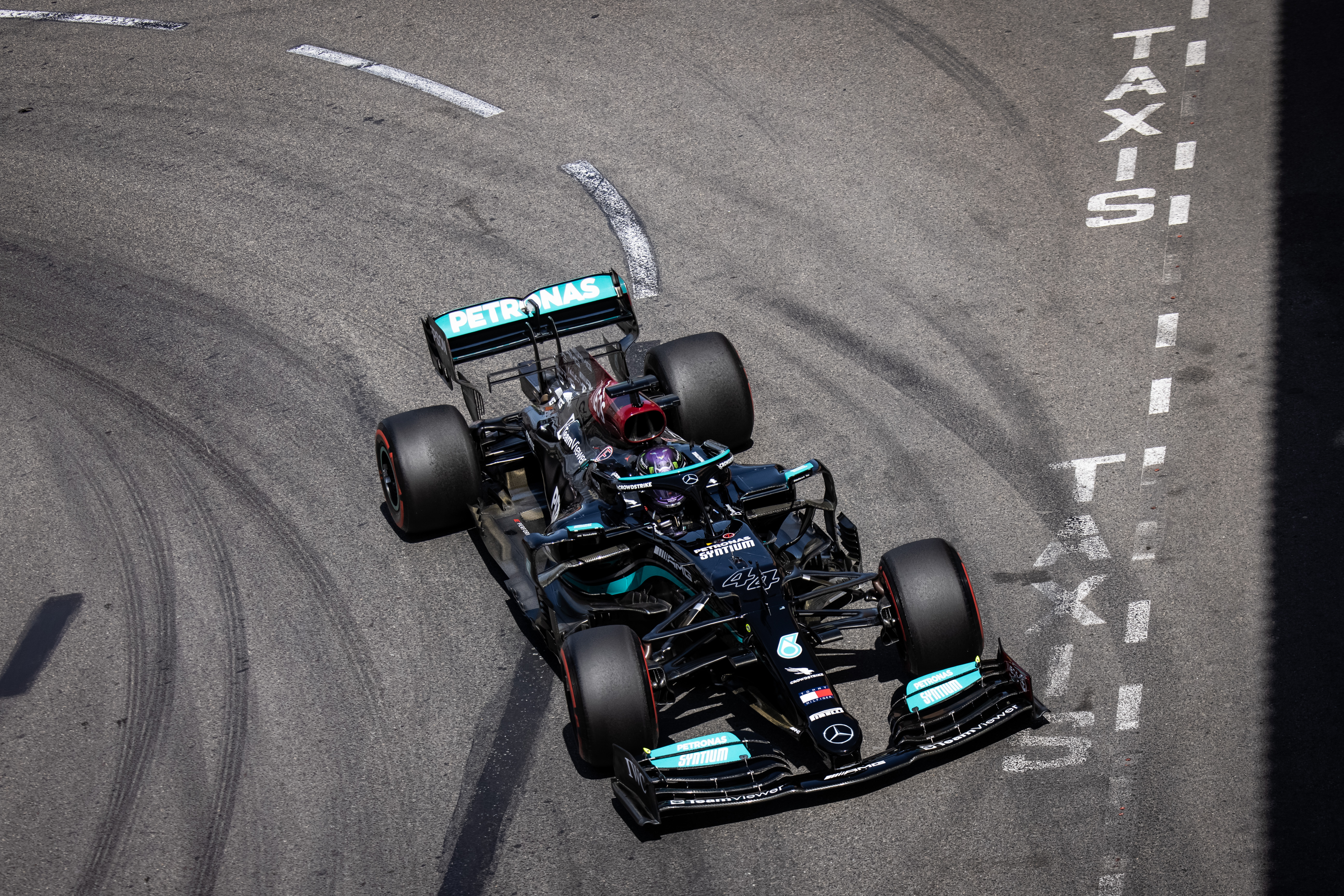
While Mercedes was working through this process, the Red Bull was more often the stronger car in the first half of the season, which was underlined by a run of five consecutive victories from Monaco to France.
Then came the Silverstone upgrade, which was described by Mercedes trackside engineering Andrew Shovlin as “quite extensive in terms of front and rear cake tins, all the area around the bargeboards, the floor”. This allowed Mercedes to turn the tables and more often have the edge over the second half of the year.
The Race’s technical director Gary Anderson immediately described these changes to the floor and bargeboards as a turning point given the shifting priorities, which became focused on making the entire underfloor working harder.
“Mercedes has changed the aerodynamic flow structure from its initial design, which pulls the flow out from underneath the raised front of the chassis and took it around the undercut sidepod, to a version aimed at helping the underfloor and in turn the diffuser by turning the airflow upwards along the side of the floors front corner,” Anderson wrote at Silverstone.
“This increases the performance of that critical front corner of the underfloor. All this airflow structure works together but you can influence its priorities.”
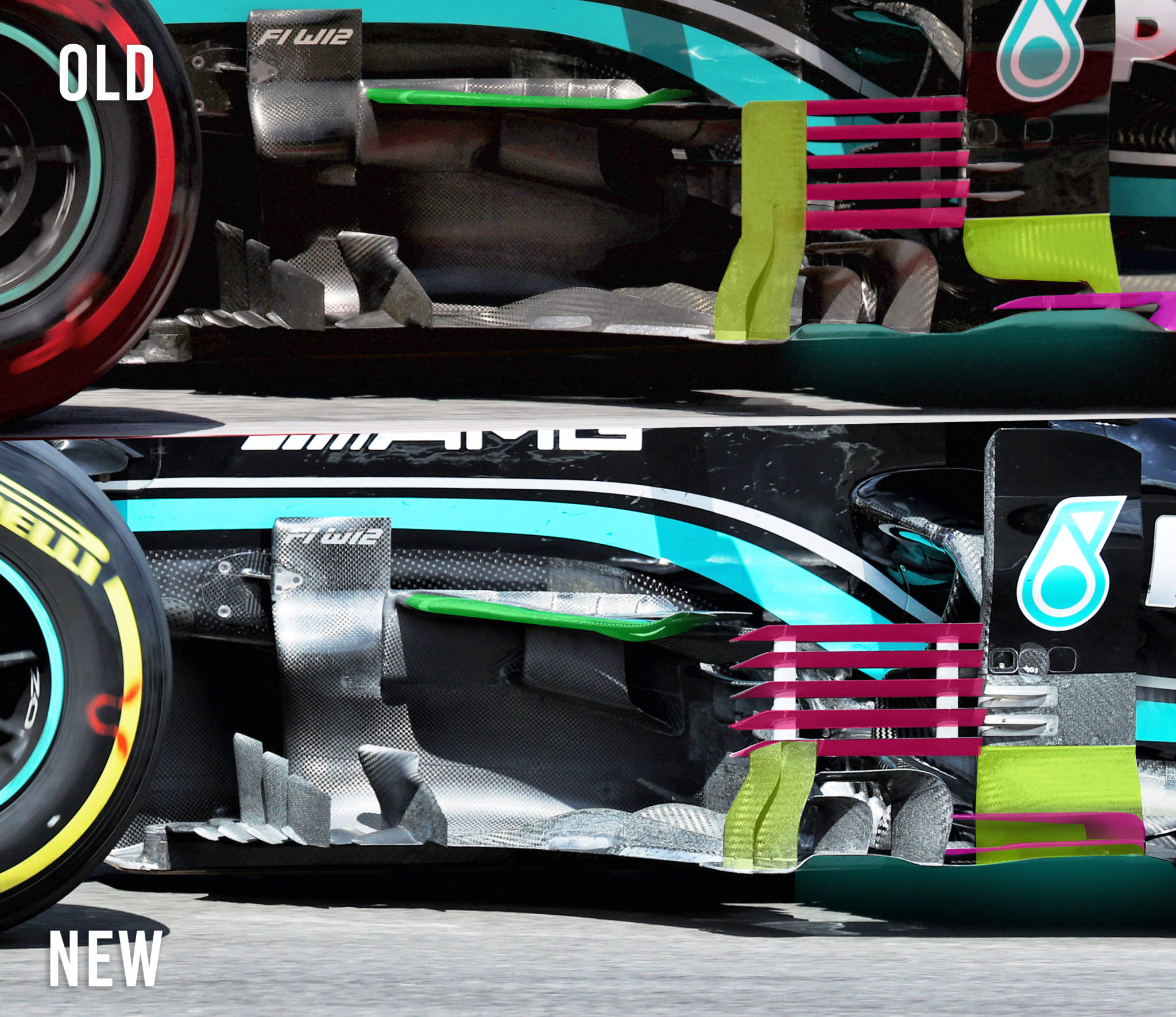
The introduction of this package was what led to the performance levelling off, but by then Mercedes had a package that would prove to be the stronger over the second half of the season.
While at Silverstone Red Bull did have the quicker car, with only the dropping temperatures in the Friday evening qualifying session knocking Red Bull out of the window and allowing Hamilton to take pole position, from Hungary onwards the Mercedes was more often stronger.
There were still circuits where the Red Bull had the edge thanks to its downforce advantage, notably Zandvoort – where it was stunningly quick through the steeply banked Turn 3 where the longer wheelbase of the Mercedes was a limiting factor – and at Mexico City. There, despite increasingly struggling as qualifying progressed and ending behind the Mercedes drivers thanks to the rising temperatures, Verstappen dominated the race.
That followed a victory at Austin where the Mercedes was quicker over a lap but a combination of the tyre performance once settled into a long run and Verstappen’s brilliance resulted in a Red Bull victory. Verstappen also added two more wins to that tally in the second half of the year courtesy of his superb pole position lap in Belgium and the last-lap pass in Abu Dhabi.
With the performance of the two cars still close enough for conditions and track configurations to swing the balance, the key advantage Mercedes had was that it had an aero efficient car – helped by its rear suspension system that at high-speed dropped the rear end and created a diffuser stall, therefore cutting drag. While not a new system, or one unique to Mercedes in effect, it worked particularly well.
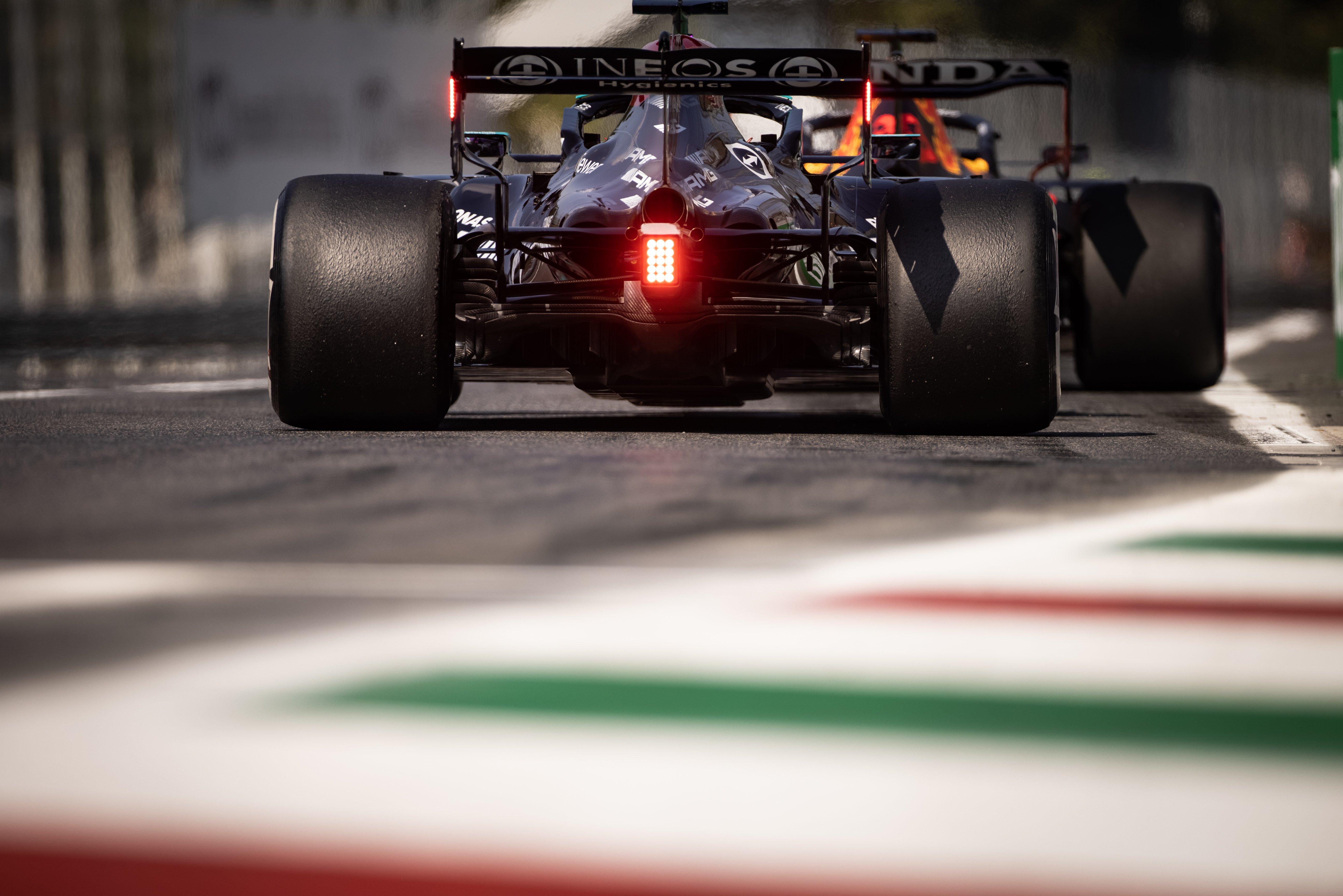
“It’s something we’ve had for years,” says Elliott. “If you look at Red Bull, they use all their travel just in a soft spring. On a race car you got your mid-spring for ride height but you also use your rocker geometry to alter your rate so your stiffness rates change as you change ride height.
“On our car, we’ve also got something slightly cleverer than that which effectively does the same thing.”
The upshot was that, in the second half of the year, Mercedes was usually able to run higher levels of downforce at compromise tracks to eliminate any corner-speed disadvantage to Red Bull while maintaining its strength on the straights.
That did lead to Red Bull raising suspicions over engine performance, and indeed allegations of flexible aero, especially with Mercedes introducing a series of power unit changes late on through a combination of reliability concerns and troubling degradation (the latter barely a problem for Honda).
The Mercedes power unit was certainly another step forward this year, with the conspicuously large plenum playing a part in that.
So which car was better, the Mercedes or the Red Bull? It’s a more complicated question than has been the case in previous seasons where the average performance advantage was more clear-cut. But on pure fastest single-lap pace, the Mercedes was quicker than the Red Bull 12 times out of 22 with its average advantage a scant 0.1%
Given things were so close, it was always going to be swung by the small details of any given weekend. Where Mercedes really benefitted was that in the second half of the season in particular it was more a ‘car for all seasons’.
But it was close enough that either team could have won the constructors’ championship and you could say the same about Verstappen and Hamilton in the drivers’ championship.


